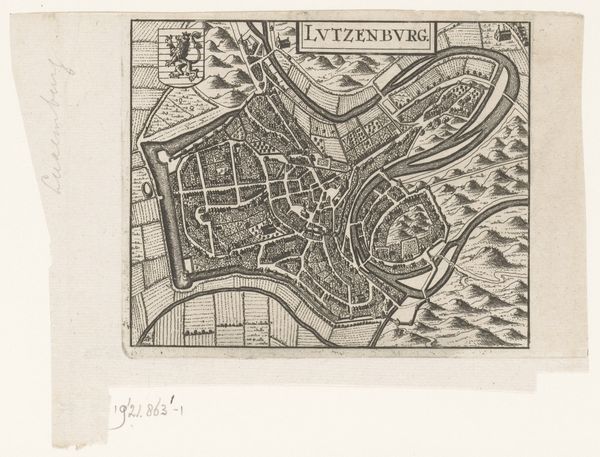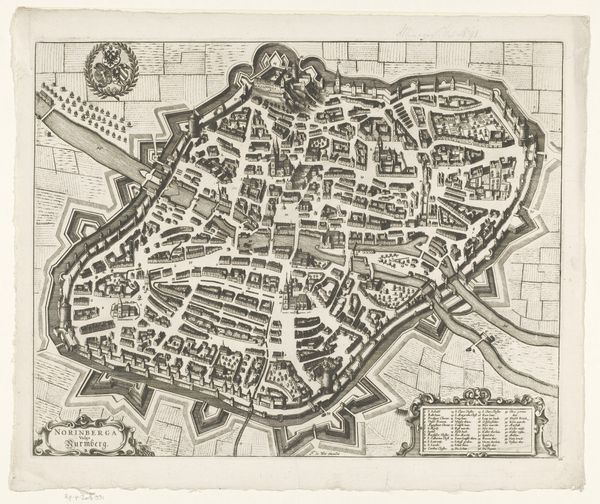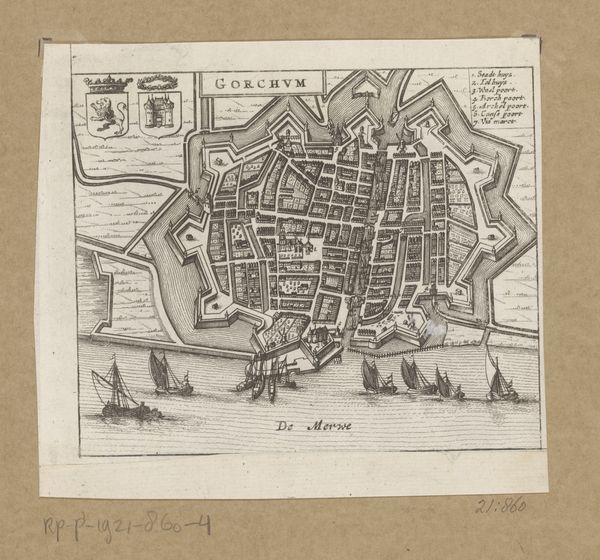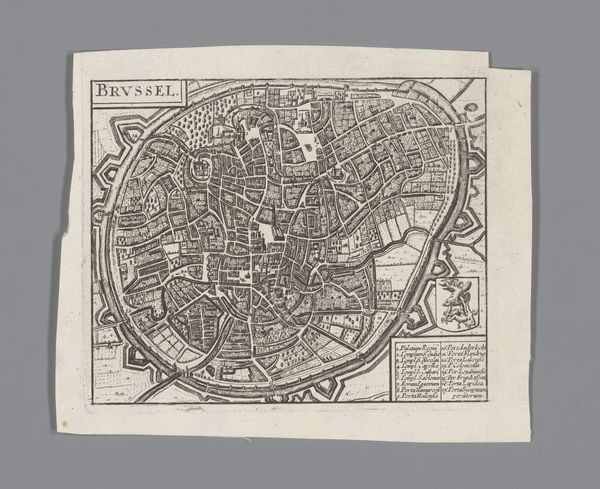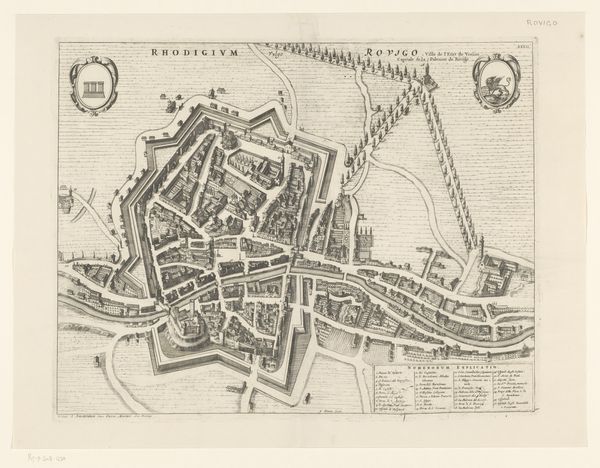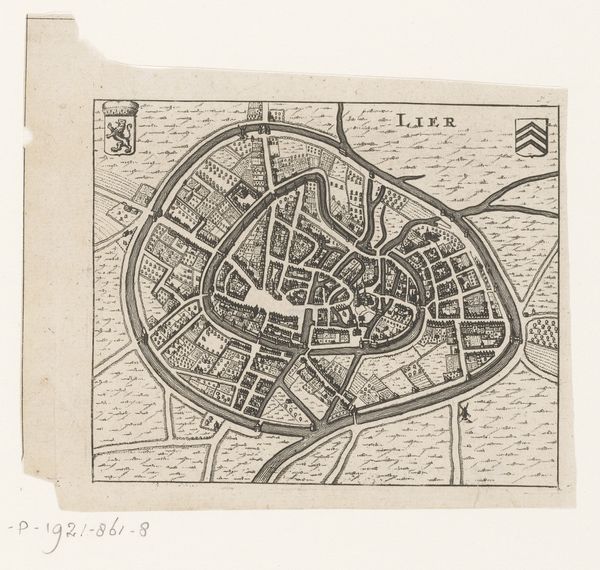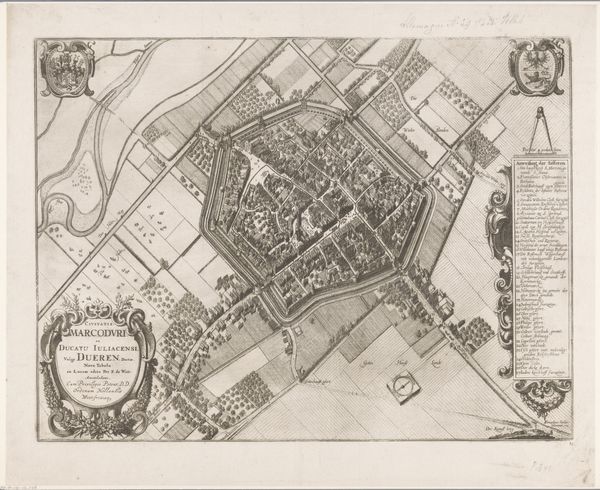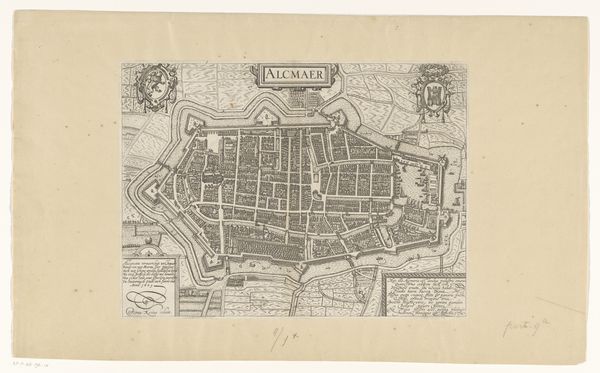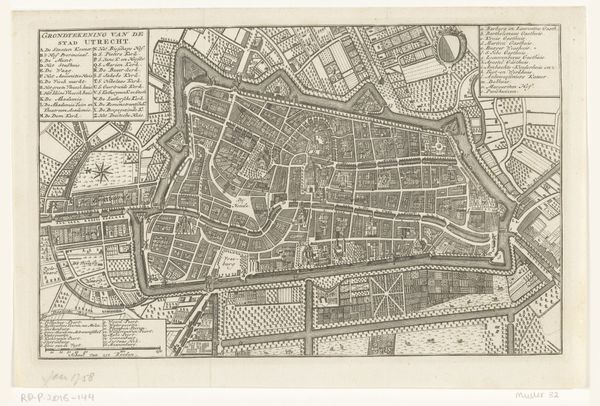
print, engraving
#
dutch-golden-age
# print
#
cityscape
#
history-painting
#
engraving
Dimensions: height 120 mm, width 148 mm
Copyright: Rijks Museum: Open Domain
Editor: Here we have an engraving titled “Plattegrond van Middelburg,” created in 1652. The artist is unknown. It’s so intricate! The sheer amount of detail makes me wonder about the life that teemed within those walls. What can you tell me about this print? Curator: Well, consider the means of production itself. This engraving, as a form of printed matter, signifies the rise of accessible information and visual culture. Its materiality, the ink pressed onto paper, reflects the socio-economic shifts of the Dutch Golden Age where even cityscapes become commodities, signs of civic pride, and potentially, tools for governance. Editor: Governance? How so? Curator: Maps like these were not neutral representations. Who commissioned them? Who could afford them? The layout emphasizes fortifications, suggesting military concerns or civic defense planning. Even the choice of what to include and exclude provides insight into the values and priorities of the patron and the engraver. What purpose did it serve? Editor: So, it's less about an objective view and more about… presenting a particular image? Maybe one of control and order? Curator: Precisely! Look closely at the details: the structured layout, the prominent buildings. Think about the labor involved in creating such a detailed representation. Whose labor was valued, and whose was not even visible within these walls? It makes you ponder, doesn't it? Editor: It does! I didn't initially consider the implications of map-making itself. Curator: These materials carry layers of meaning, revealing the intricate relationship between art, labor, and social structures of the time.
Comments
No comments
Be the first to comment and join the conversation on the ultimate creative platform.
